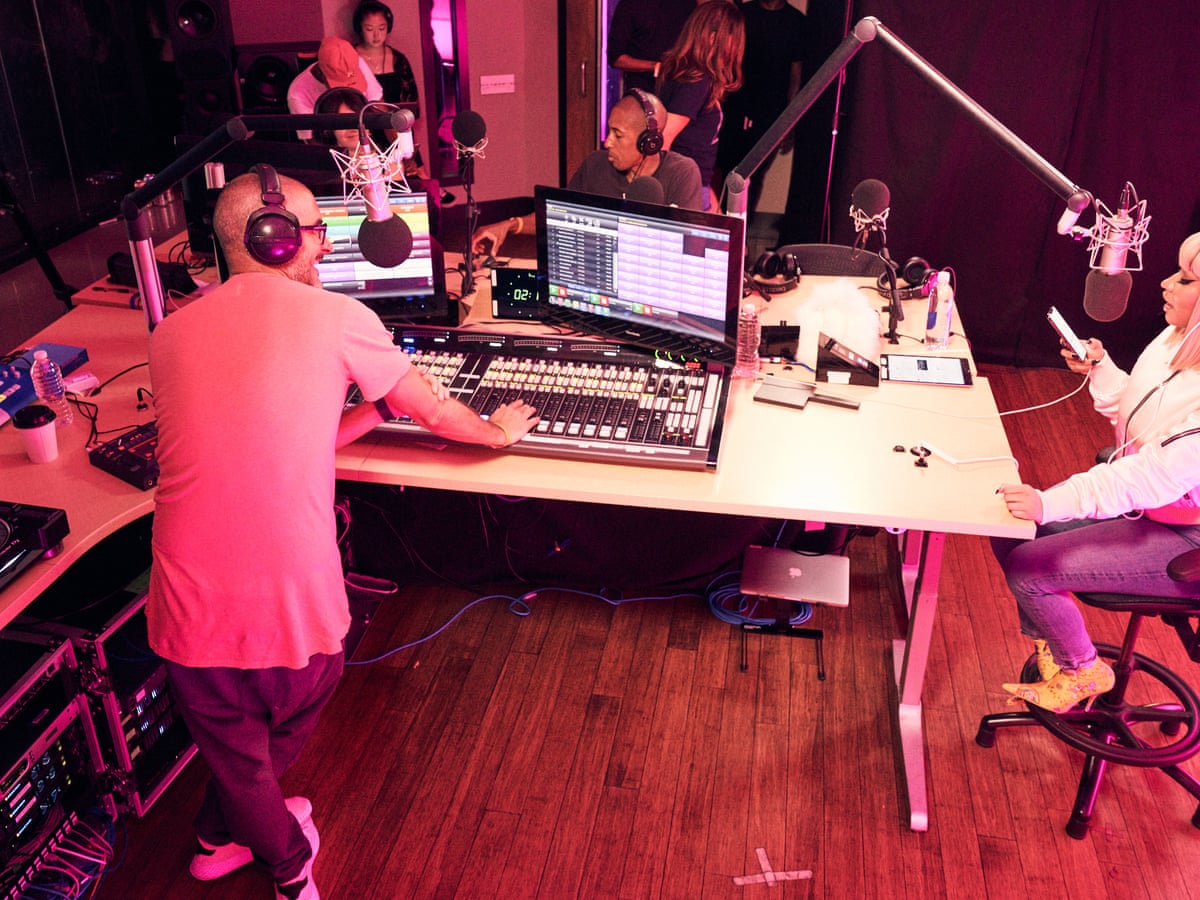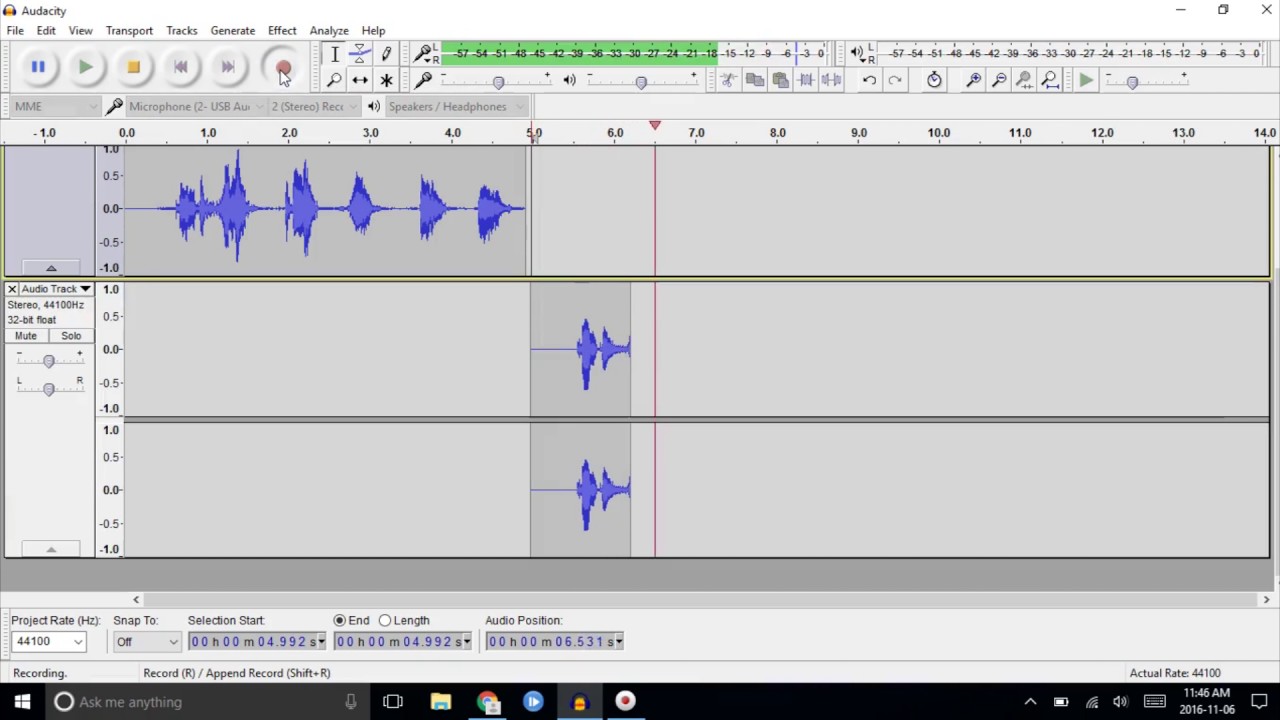Home>Devices & Equipment>Radio>How Many People Listen To The Radio


Radio
How Many People Listen To The Radio
Modified: January 22, 2024
Curious about radio listenership? Discover how many people tune in to the radio and stay connected with the latest updates, music, and news.
(Many of the links in this article redirect to a specific reviewed product. Your purchase of these products through affiliate links helps to generate commission for AudioLover.com, at no extra cost. Learn more)
Table of Contents
Introduction
The radio has long been a beloved medium for entertainment, news, and music dissemination. Despite the emergence of new technology and digital platforms, radio continues to hold a prominent place in the lives of millions of people around the world. In this article, we will explore the popularity of radio and delve into the question of how many people listen to the radio.
Researching the exact number of radio listeners worldwide can be a challenging task. This is due to a variety of factors, including differences in data collection methodologies and the fragmentation of the radio market. However, various surveys, studies, and industry reports provide valuable insights into the reach of radio and its impact on different demographics.
Radio listening habits vary across different countries and regions, with cultural, technological, and socio-economic factors influencing the preferences of listeners. Understanding these factors can help us gain a clearer picture of radio consumption on a global scale.
Methodology
In order to determine how many people listen to the radio, various methodologies are employed by research organizations, media agencies, and broadcasting companies. These methodologies often include surveys, audience measurement data, and analysis of radio ratings. While each methodology has its own limitations, combining these different approaches can provide a more comprehensive understanding of radio listenership.
One of the key tools used to measure radio listenership is the diary method. This involves participants keeping a diary where they record their radio listening habits throughout the day. This data is then collected, analyzed, and extrapolated to estimate the broader listenership numbers. The diary method provides detailed insights into listener behavior, including the time spent listening to the radio, preferred radio stations, and types of content consumed.
Another common approach is the use of electronic meters or electronic measurement devices. These devices are installed in participants’ homes and automatically track their radio listening patterns. The data collected from these devices is then used to estimate the number of individuals listening to different radio stations at different times.
Additionally, audience measurement companies conduct surveys and interviews to gather information about radio listening habits. These surveys typically involve a sample of the population and aim to understand demographic breakdowns, preferred radio genres, and individual motivations for listening to the radio.
It’s important to note that while these methodologies provide valuable insights, they do have limitations. Sample sizes may not always be representative of the entire population, and some individuals may over or under-report their listening habits. Nevertheless, by combining different methodologies and cross-referencing data, researchers can estimate the number of radio listeners with a reasonable degree of accuracy.
Demographics
The audience for radio is diverse, encompassing various demographics and age groups. Understanding the demographics of radio listeners is crucial for broadcasters and advertisers in order to tailor their content and messaging effectively.
According to research and industry reports, radio consumption tends to be higher among older age groups. This can be attributed to factors such as habit, accessibility, and preference for traditional forms of media. However, this does not mean that radio is exclusive to older generations. Many young adults and teenagers still tune in to the radio, either through traditional FM/AM broadcasts or through online streaming.
When it comes to gender, radio has a fairly equal distribution of listeners. Both men and women enjoy the radio as a source of entertainment and information. However, there may be some variations in terms of preferred radio genres and programming choices.
Furthermore, the socio-economic status of individuals can also influence their radio listening habits. For example, people with lower incomes may rely more heavily on the radio for news and entertainment, while those with higher incomes may have a wider array of media options available to them.
Geographical location is another factor that impacts radio listenership. In certain regions, radio remains a dominant form of media due to limited access to the internet or a lack of alternative entertainment options. In other areas, where digital platforms are prevalent, radio consumption may be lower.
Understanding the demographic breakdown of radio listeners is crucial for broadcasters and advertisers to effectively reach and engage their target audiences. By tailoring content, programming, and advertising to specific demographics, radio stations can maintain and grow their listener base.
Listening Habits
When it comes to radio, people have diverse listening habits that can vary based on their preferences, daily routines, and lifestyle. Some individuals tune in to the radio during their daily commute, while others listen while working, exercising, or relaxing at home.
A common trend in radio listening habits is the preference for specific time slots or shows. Many listeners have their favorite radio programs that they tune in to regularly. This could be a morning talk show, an evening music program, or a late-night talk radio segment. These shows often provide a sense of familiarity, entertainment, and connection to the hosts or presenters.
Another aspect of radio listening habits is the choice of radio stations. Different stations offer varied programming, such as music genres, news, sports, or talk shows. Listeners may have their go-to station for specific content, or they may switch between stations to cater to their mood or interests.
In recent years, the emergence of digital platforms has influenced listening habits. Many radio stations now offer online streaming options, allowing listeners to tune in via smartphones, tablets, or computers. This has expanded the accessibility and convenience of radio, as individuals can listen to their favorite stations anytime and from anywhere with an internet connection.
Radio listening habits also differ among demographic groups. Older individuals may have more traditional listening habits and prefer traditional radio broadcasts. On the other hand, younger generations are more likely to engage with radio through digital platforms, on-demand podcasts, or curated playlists.
The COVID-19 pandemic has also had an impact on radio listening habits. With many people spending more time at home, radio has provided companionship and a sense of connection during periods of isolation. Additionally, radio has played a crucial role in disseminating important health information and updates during the pandemic.
Overall, radio listening habits are shaped by personal preferences, routines, accessibility, and technological advancements. As the media landscape continues to evolve, broadcasters and content providers must adapt to the changing habits and preferences of radio listeners.
Reasons for Listening
There are several reasons why people choose to listen to the radio, despite the availability of other media options. The radio offers unique advantages and appeals to listeners for different purposes.
One of the primary reasons people listen to the radio is for entertainment. Radio stations often feature a variety of engaging content, including music, talk shows, comedy segments, and interviews. Many listeners enjoy the curated playlists and live DJ interactions that provide a sense of community and spontaneity.
In addition to entertainment, radio is also a significant source of news and information. News updates, weather reports, and current affairs discussions are commonly featured on radio stations. Listeners rely on the radio to stay informed, especially during their daily commute or when they are unable to access news through other means.
Radio also offers a sense of companionship and connection. The familiar voices of radio hosts and presenters can provide a comforting and intimate experience, especially for individuals who may feel isolated or lonely. Listeners often develop a sense of attachment to their favorite radio personalities and enjoy the sense of community that radio provides.
Furthermore, radio remains a convenient and readily available medium. Unlike other forms of media that require a screen or internet connection, radio can be enjoyed anytime and anywhere with a simple receiver. This accessibility makes it a preferred choice for many individuals, whether they are driving in a car, doing household chores, or participating in outdoor activities.
Advertising is another aspect of radio that can attract listeners. Radio advertisements are often tailored to a specific audience and can provide relevant information about products and services. Some listeners enjoy the entertaining and creative nature of radio advertisements, while others find them informative and helpful for making purchasing decisions.
Lastly, nostalgia plays a role in the appeal of radio. Many people have grown up with radio as a constant companion and have fond memories of songs, shows, and experiences associated with it. Nostalgia can be a powerful motivator for listeners to tune in and relive those memories.
Ultimately, the reasons for listening to the radio are diverse and personal. Whether it’s for entertainment, information, companionship, convenience, advertising, or nostalgia, radio continues to captivate and engage audiences around the world.
Radio Consumption by Age Group
Radio consumption varies significantly among different age groups, with each group exhibiting unique listening habits and preferences. Understanding these patterns is crucial for radio broadcasters to effectively cater to their target audience. Below we explore the radio consumption habits of various age groups:
1. Generation Z (born between 1997 and 2012): This age group is known for their affinity towards digital platforms and streaming services. While traditional radio consumption may be lower among Generation Z, they still engage with radio through online platforms, podcasts, and curated playlists. They value personalized content and seek diverse and niche genres.
2. Millennials (born between 1981 and 1996): Millennials have a mixed preference for both traditional radio and digital platforms. They still value the authenticity and community aspect of radio. However, they also appreciate the convenience of streaming and on-demand options. They are more likely to engage with radio during their daily commute or specific shows that align with their interests.
3. Generation X (born between 1965 and 1980): This age group grew up during the prime era of radio and often display strong loyalty to traditional broadcasts. They listen to radio regularly and tune in to their favorite stations for news updates, music, and talk shows. Generation X values the human connection that radio offers and are more inclined to listen during peak commuting hours.
4. Baby Boomers (born between 1946 and 1964): Baby Boomers have a strong attachment to traditional radio and are known as loyal radio listeners. Many in this age group have formed long-standing habits and have their preferred radio stations. They enjoy a variety of content, including music, news, and talk shows. Baby Boomers often listen to radio at home and rely on it as a primary source of information.
5. Silent Generation (born between 1928 and 1945): This age group tends to have a high radio consumption rate, relying on it for entertainment and staying connected with the world. Many in the Silent Generation have grown up with radio as their primary source of news and entertainment and continue to value it. They often prefer traditional radio broadcasts and may be less likely to engage with digital platforms.
It’s important to note that these age group preferences are generalizations and individual preferences may vary. Additionally, as technology and media continue to evolve, radio consumption habits within each age group may also change.
Radio Consumption by Gender
Radio consumption is fairly evenly distributed between genders, with both men and women enjoying the medium for various reasons. However, there may be some differences in the listening habits and preferences of men and women. Here is a closer look at radio consumption by gender:
1. Music Preferences: Men and women may have different preferences when it comes to the type of music they listen to on the radio. Studies suggest that women tend to listen to a wider variety of genres, including pop, rock, country, and R&B. Men, on the other hand, may be more inclined towards rock, hip-hop, and sports talk radio. However, these preferences can vary greatly based on individual interests and tastes.
2. Talk Shows and News: Both men and women engage with radio talk shows and news programs. However, studies have shown that women may have a higher interest in talk shows that focus on topics such as relationships, health, and self-improvement. Men, on the other hand, may lean towards sports talk radio, business news, or political discussions. These preferences can be influenced by societal norms and personal interests.
3. Listening Habits: Men and women may have different patterns when it comes to radio listening habits. For example, men may be more likely to listen to the radio while driving or during their daily commute. Women, on the other hand, may listen to the radio while engaged in household chores, relaxing, or during work hours. These habits can vary based on individual routines and lifestyles.
4. Advertisement Responses: Research suggests that men and women may respond differently to radio advertisements. While both genders can be influenced by well-crafted and engaging ads, women may be more likely to respond to emotional appeals and storytelling in advertisements. Men, on the other hand, may respond more to ads that highlight features, benefits, and logic. However, individual preferences and responses to advertisements can still vary greatly.
It is important to remember that while there may be some gender-based trends in radio consumption, individual preferences and tastes play a significant role. It’s essential for broadcasters and advertisers to create a diverse range of content that appeals to a wide audience, regardless of gender.
Radio Consumption by Region
Radio consumption patterns can vary significantly from region to region, influenced by cultural, societal, and technological factors. Here is an overview of radio consumption by region:
1. North America: In North America, traditional radio broadcasts continue to be popular, especially for commuting purposes. However, digital platforms, online streaming, and satellite radio have gained significant traction in recent years. Talk radio, music stations, and news broadcasts are commonly consumed in this region.
2. Europe: Europe has a diverse radio landscape, with a wide range of public and commercial radio stations catering to different regions and languages. Public service broadcasters play a significant role in several European countries, offering a mix of informative and cultural programming. Online radio streaming and podcasts are also popular, alongside traditional FM/AM broadcasts.
3. Asia: Radio consumption in Asia varies greatly depending on the country and region. In many parts of Asia, radio remains a primary source of news and entertainment, especially in remote areas with limited access to the internet. AM radio is still prevalent in some countries, while FM radio, online streaming, and mobile apps are gaining popularity with younger generations.
4. Africa: Radio holds immense importance in Africa, serving as a vital medium for communication and information dissemination. Community radio stations are particularly prevalent, providing local news, entertainment, and cultural content. In many rural areas where access to television and the internet is limited, radio remains the primary source of news and entertainment.
5. Latin America: Radio plays a significant role in Latin America, delivering a mix of music, news, sports, and talk shows. Many Latin American countries have a strong presence of FM radio stations, with a mix of commercial and public broadcasters. Online streaming and mobile apps are also growing in popularity, offering listeners more flexibility and choice.
6. Oceania: In Oceania, radio consumption patterns are influenced by the presence of both urban and rural areas. FM radio stations, internet streaming, and satellite radio are all commonly accessed. Pacific island nations rely heavily on radio for news, music, and cultural programming, fostering a sense of community and connectivity.
It’s important to note that these regional trends may vary within different countries and localities. Additionally, as technology continues to advance, online streaming, podcasts, and mobile apps are becoming increasingly popular across regions, shaping the future of radio consumption worldwide.
Radio Consumption by Time of Day
The time of day greatly influences radio consumption patterns, as people’s routines and activities dictate when they tune in. Here is an overview of radio consumption by time of day:
Morning Rush Hour: One of the peak times for radio consumption is during the morning rush hour, typically between 6:00 AM and 9:00 AM. Many people tune in to the radio during their commute to work or school. Morning shows, news updates, and traffic reports are popular during this time as listeners seek information and entertainment to start their day.
Work Hours: Radio consumption during work hours varies depending on the type of workplace and job responsibilities. Some individuals may listen to the radio as background music while working, while others may tune in during breaks or lunchtime. During this time, talk shows, music, and news updates are commonly consumed.
Afternoon Drive Time: The afternoon drive time, usually between 4:00 PM and 7:00 PM, is another important period for radio consumption. Many individuals listen to the radio during their commute back home, seeking a mix of music, talk shows, and traffic updates. Afternoon drive shows often offer a blend of entertainment, news, and interaction with listeners.
Evening and Night: Radio consumption tends to be lower during the evening hours as individuals prioritize leisure activities, family time, or relaxation. However, specific programs or genres may attract listeners during this time. Evening and late-night music shows, talk radio, and specialized content like sports broadcasts or cultural programming are popular in the evening and night hours.
Weekends and Holidays: On weekends and holidays, radio consumption patterns can differ as people have more flexibility in their schedules. Many individuals tune in for longer periods, enjoying a diverse range of content, including music marathons, special programs, live event broadcasts, and interactive shows. Weekend mornings often feature lifestyle and entertainment shows, while evenings may focus on music and entertainment.
It is important to understand the radio consumption patterns based on the time of day to effectively target specific audience segments and deliver content that aligns with their needs and preferences. Radio broadcasters often tailor their programming to cater to different time periods and engage listeners during key moments of the day.
Radio Consumption by Platform
The way people consume radio has evolved with the rise of digital platforms and technological advancements. Here is an overview of radio consumption by platform:
1. Traditional FM/AM Radio: Traditional FM/AM radio broadcasts remain a popular platform for radio consumption. Many listeners still tune in to their favorite stations using traditional radio receivers in their homes, cars, or workplaces. FM/AM radio provides a reliable and accessible option for those who prefer traditional broadcasting.
2. Online Streaming: With the advent of the internet, online streaming has become a popular platform for radio consumption. Many radio stations now offer live streaming options through their websites or dedicated mobile apps. Online streaming allows listeners to tune in to their favorite stations from any location, providing convenience and flexibility. It also offers access to a wide range of local and international stations.
3. Mobile Apps: Mobile apps have revolutionized the way people listen to radio. Dedicated radio apps, such as TuneIn, iHeartRadio, and RadioPlayer, allow users to access a vast array of radio stations and genres directly from their smartphones or tablets. These apps often provide additional features, such as personalized recommendations, podcast integration, and the ability to save favorite stations.
4. Podcasts: Podcasts have gained immense popularity in recent years and have become a significant platform for radio-style content. Many radio stations offer their shows and segments as podcasts, allowing listeners to enjoy them on-demand. Podcasts provide the convenience of listening to specific shows at any time and are often categorized by genre or topic, catering to diverse listener interests.
5. Satellite Radio: Satellite radio, such as SiriusXM, provides a subscription-based platform for radio consumption. It offers a wide range of channels, including music, talk shows, sports, and news, with improved sound quality and coverage compared to traditional broadcasts. Satellite radio is particularly popular in regions with limited FM/AM options or where listeners seek a greater variety of content.
6. Smart Speakers and Voice Assistants: The rising popularity of smart speakers, such as Amazon Echo and Google Home, has also influenced radio consumption. Users can simply voice commands to play specific radio stations, podcasts, or genres, creating a seamless and hands-free listening experience.
It’s important for radio broadcasters to adapt to these different platforms and ensure their content is accessible and available across multiple channels. By embracing digital platforms, radio stations can reach a wider audience and offer listeners more options for consuming their favorite shows and content.
Conclusion
Radio continues to maintain its relevance and popularity as a medium of entertainment, news, and information dissemination. Although the exact number of radio listeners worldwide is challenging to determine, various methodologies and studies provide valuable insights into radio consumption habits.
Demographics play a significant role in radio consumption, with different age groups exhibiting unique preferences and listening habits. While older generations tend to have higher radio consumption, younger individuals engage with radio through digital platforms and online streaming.
Gender also influences radio consumption, with men and women having varied preferences in terms of music genres, talk shows, and listening habits. However, it’s essential to note that individual preferences within each gender can vary greatly.
Radio consumption also varies by region, influenced by cultural factors and technological advancements. Traditional radio broadcasts, online streaming, podcasts, and mobile apps are all popular platforms for accessing radio content.
The time of day greatly impacts radio consumption patterns, with peak listening times during morning and afternoon drive hours. Evenings and weekends often offer specialized programming and cater to diverse listener preferences.
In conclusion, radio continues to be a beloved medium for millions of people around the world. Its ability to provide entertainment, information, companionship, and a sense of community contributes to its enduring appeal. As technology advances, radio broadcasters must adapt and embrace digital platforms to reach and engage their audiences effectively.











